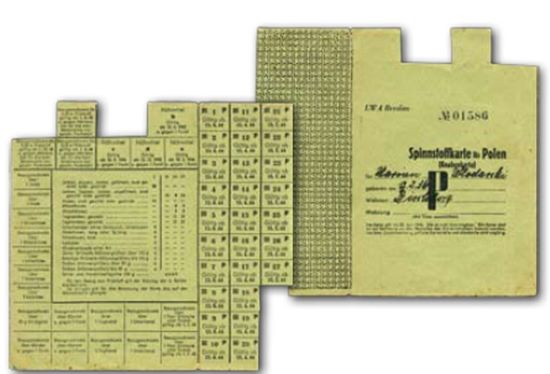were introduced by the Germans at the beginning of the war and with time covered most of the basic food and non-food products. So there were cards for bread – Reichsbrotkarte, sugar and bread ointment – marmalade (with carrot and beet) – Zucker und Lebensmittelkarte fűr Brotaufstrich, cigarettes – Raucherkarte, soap – Seifenkarte, spinning and textile products (clothing) – Spinnstoffkarte cards, etc. Ration cards were issued by the departments of municipalities and city councils. If such cards were issued on the territories incorporated in the “old Reich” they would have the endorsements of the relevant national headquarters office of insurance (LWA). From 1942, a regulation was forced which declared that ration cards could only be issued upon the proof of a certificate stating the person requesting vouchers had employment. The certificates were then transferred to Arbeitsamts in order to be completed with appropriate annotations.
There was a wide criteria (sex, age, nationality, occupation) on which and how many ration cards one could receive. The amount of allowances depended on: the nationality – the largest amount, of course, went to the Germans and the German people (in GG it was 2-3 times higher than for the Poles); the type of work – such as higher allowances were attributed to those working in the military industry. Annexed areas in the Reich, in the District Ciechanow and in Upper Silesia (Górny Śląsk), a higher allowance was given to the employed than to the unemployed.

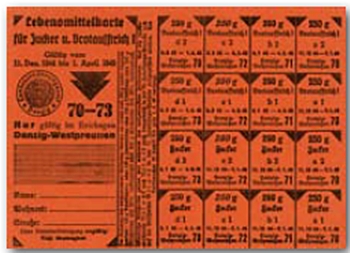
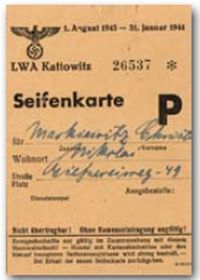
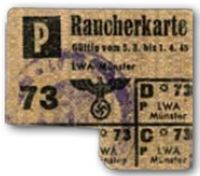
It also depended on age – it was especially discriminating against children under 14 years of age performing the work of adults, on sex – e.g, in the ration cards for clothing, were different for men and women, boys and girls, children under 12 months. There were also some territorial differences not only between the provinces and Gaus, but also within a single administrative territory. Within the GG such allowances for food in Warsaw were quite higher than in other cities. In 1940, the amount of calories in food supplies had been unified. However, the differences in the amount and type of allowances have always remained and depended on local stocks, in a particular month, etc.
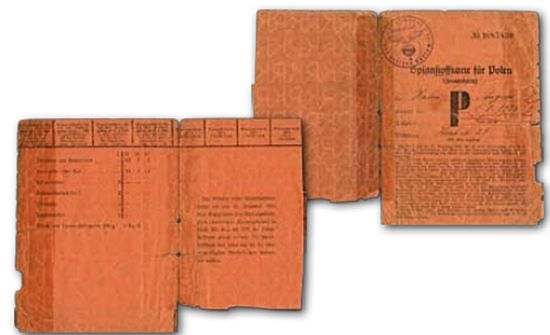
The ration card’s allowance in the GG covered only the people working in cities (or those deemed unable to work) and their families. The rural population did not receive any allowances for food and had to take care of itself. In order to receive clothing one had to obtain a special sort of ration cards. The Bezugscheine (ration card) could only be issued by district and city authorities. Another issue was the quality of the allocated products. The bread was dark, because in 1940 wheat flour was banned from being used in baking, the meat was often from horse, vile with bad quality, and soap was allocated in very small portions. Rations were gradually reduced, so that in 1943 some representatives of the GG noticed that workers in the GG had a harder time obtaining these rationed products than foreign workers in the Reich. This even occurred to the Polish and Soviet prisoners of war, which caused their low efficiency. An attempt to fix this situation was carried out in 1943, which only made it a little bit better. In this situation, the official shortages and rationing on a massive scale developed a black market in GG, where you could find almost anything: Dutch furniture, French perfumes, and other luxury goods from German soldiers returning from France. The scale of informal trade indicated that even German troops, to some extent, bought provisions on the black market, not to mention the profit that the illegal trade in goods gave the merchants and the German government.
